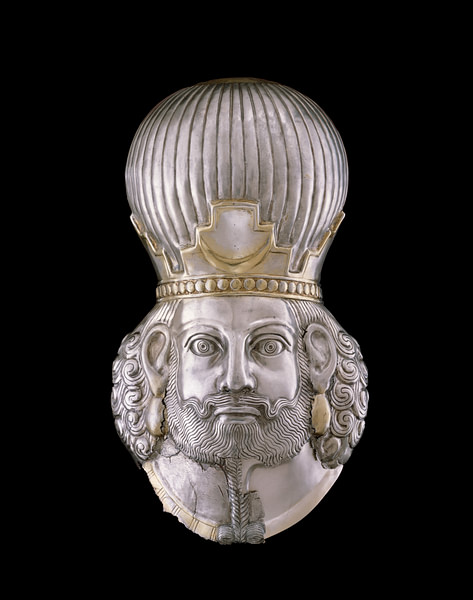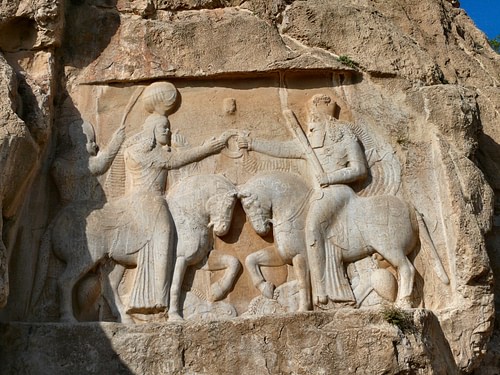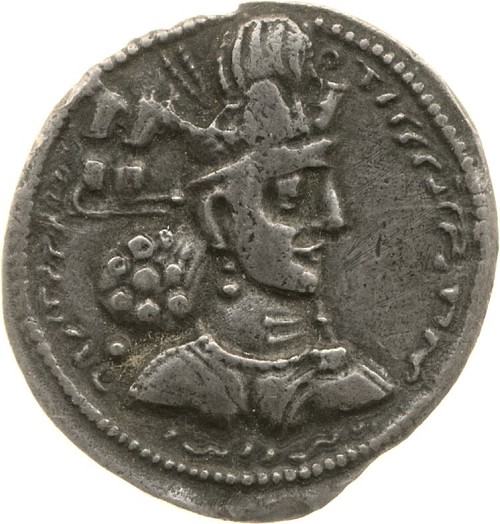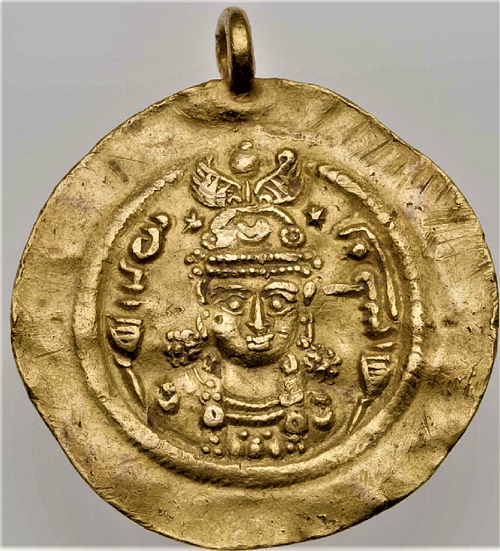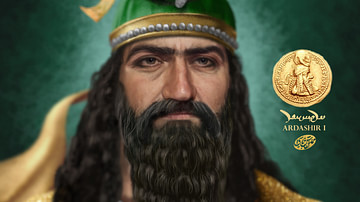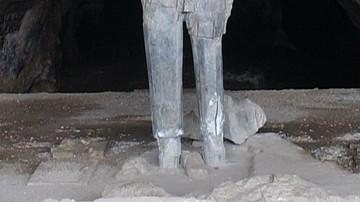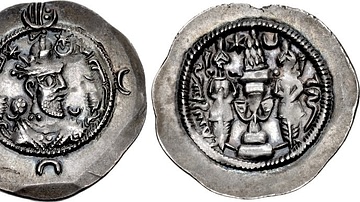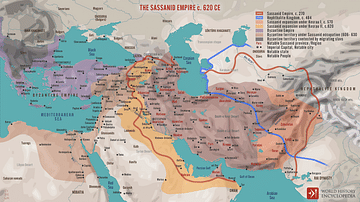The Sassanian Empire (224-651) was the greatest expression of Persian culture in the ancient world. It was consciously modeled on the earlier Achaemenid Empire (c. 550-330 BCE) which established Persian supremacy in the region and developed innovations in government, agriculture, ancient Persian art and architecture, and religion.
The Achaemenids fell to Alexander the Great in 330 BCE and, after his death in 323 BCE, his general Seleucus I Nicator (r. 305-281 BCE) founded the Seleucid Empire (312-63 BCE) in its place.
The Seleucids lost territory to Rome in the west beginning in 190 BCE but the Parthians had been making incursions into their realm much earlier and established the Parthian Empire (247 BCE-224 CE) which eventually replaced the Seleucids. The Parthians retained aspects of the Achaemenid Empire but departed in significant ways, notably by decentralizing their government and reforming their military with a focus on cavalry, rather than infantry, in Parthian warfare.
The Parthians fell to the Sassanians in 224 who drew on all three of the previous empires to fashion their own but, primarily, took the best aspects of the Achaemenid Empire and adapted them to their own use and time. The Sassanian monarchs were not all paragons of kingship by any definition but, up until the last 100 years of the empire, maintained the vision of its founder (Ardashir I) even when they made no lasting contribution themselves. Some of them, however, significantly improved upon that vision to create one of the most impressive political and social entities of the time whose influence would affect later cultures.
The following is a list of the Sassanian kings with brief commentary on their reign. The greatest of these, after Ardashir I, are Shapur I, Shapur II, Bahram V, Kavad I, and Kosrau I. After Kosrau I's reign, the empire degenerated through infighting among the nobles and wars with the Byzantine Empire (330-1453) which weakened it to the point where it lacked the resources and imagination to withstand the 7th century invasion of the Muslim Arabs.
Monarchs from Ardashir I to Shapur II (224-379)
Ardashir I (r. 224-240) was a general in the Parthian army who led the revolt which toppled the Parthian Empire. He then founded the Sassanian Empire (named for his ancestor Sassan), defeated the Roman Empire in a number of engagements, enlarged his territories, and initiated cultural, architectural, and religious developments and policies which established the vision of the empire.
Shapur I (r. 240-270), son of Ardashir I, continued and improved upon his policies such as making Zoroastrianism the state religion, architectural innovations, and focusing on cavalry units in Persian warfare. Shapur I was victorious in almost every engagement with Rome, capturing the Roman emperor Valerian (r. 253-260) and employing Roman prisoners of war in work details. Under his reign, the Persian policy of religious tolerance was expanded, the religion of Manichaeism was developed, largely, at his court by the prophet Mani (l. 216-274), and the process of committing the Avesta (Zoroastrian scriptures) to written form was expanded.
Hormizd I (r. 270-271), son of Shapur I, ruled almost a year before he was replaced by his brother Bahram I. He maintained his father's policies with a special emphasis on limiting the power of the magi (priestly class) and nobility, which most likely led to his removal and assassination; though allegedly he died of natural causes.
Bahram I (r. 271-274) reversed the previous policies, notably religious tolerance, having Mani executed, Manichean works burned, and the Manichaeans scattered. He was almost completely under the control of the magi and influenced by the nobles and, besides the Manichean persecutions, is best known for making an enemy of Rome by promising military aid to their adversary Queen Zenobia of Palmyra (l. c. 240) which he never even delivered on.
Bahram II (r. 274-293), son of Bahram I, was also controlled by the magi and nobles. He was an indecisive monarch who lost Armenia to the Romans and allowed for the continued persecution of Manichaeans by the magi.
Bahram III (r. 293), son of Bahram II, was so completely ineffective he was removed by his great uncle Narseh after a reign of four months.
Narseh (also given as Narses, r. 293-302) stabilized the empire and retook Armenia, proving himself the first effective military leader since Shapur I early in his reign. He was defeated by the Roman army in 297, however, and forced by Diocletian (r. 284-305) to sign the Treaty of Nisibis which handed Sassanian territories over to Rome and shifted the border between the empires so that the Sassanian capital of Ctesiphon was within easy striking distance of Byzantine forces. He was so humiliated by the defeat, he abdicated in favor of his son Hormizd II.
Hormizd II (r. 302-309) seemed so cowed by his father's defeat that he initiated no military action against Rome or anyone else during his reign. He practiced a policy of conciliation with the nobles, magi, and tribes of the eastern borders which managed to hold the empire together but made no advances. He was killed, most likely by the nobility, while on a hunt, though a later version of his death has him fall nobly in battle against Arab raiders.
Adur Narseh (possibly reigned 309), son of Hormizd II, may have reigned briefly after his father's death but this is unclear. The nobles had him and one of his brothers killed and imprisoned another (Hormizd) who would later escape to the Byzantine Empire.
Shapur II (r. 309-379) was the infant son of Hormizd II crowned king by the nobles shortly after he was born. For the first 16 years of his life, the empire was administered by the ineffectual nobles who allowed Arab raiders to take significant Sassanian territories. Shapur II took control when he came of age, drove the Arabs from the empire and campaigned in their lands to enlarge his own, defeated the Romans, and expanded his territories in the east. He defeated and killed the emperor Julian (r. 361-363) and forced Jovian (r. 363-364) to sign the treaty surrendering Roman Mesopotamia to the Sassanians. He completed the transcription of the Avesta and, except for persecuting Christians believing they were agents of Rome, maintained the earlier policy of religious tolerance.
Monarchs from Ardashir II to Kosrau I (379-579)
Ardashir II (r. 379-383), brother of Shapur II, agreed to rule only until Shapur II's young son came of age. He alienated the nobility through policies which favored the lower class but weakened the cohesion of the empire through the persecution of Christians. He was removed by the nobility and replaced by Shapur III.
Shapur III (r. 383-388) managed to broker peaceful negotiations with Rome concerning Armenia but accomplished little else.
Bahram IV (r. 388-399), son of Shapur III, revived Ardashir II's policies of appealing to the masses at the expense of the nobility but, unable to balance his rule, wound up alienating both. He repelled an invasion by the Hephthalites (Huns) in 395 but was so unpopular that he was finally killed by his own troops.
Yazdegerd I (r. 399-420), brother of Bahram IV, stabilized the empire and is considered among the better of the less impressive Sassanian kings. He was a talented diplomat who forged good relationships with Rome and improved the Sassanian economy by maintaining peace with his neighbors. He reinstated religious tolerance at first but, under pressure from the magi and nobles, relented and brutally persecuted the Christians for preaching against Zoroastrianism. These efforts were not seen as going far enough, however, and the nobility assassinated him. After his death, his son Shapur IV was also killed as was Shapur's cousin Kosrau and the empire teetered on civil war before power was taken by his son Bahram V.
Bahram V (r. 420-438) was a charismatic leader whose reign became legendary. He features prominently in the great Persian epic Shahnameh (written c. 1010). Bahram V was able to control the nobles and magi as he was a strict Zoroastrian and held them to the same standard of behavior he set for himself. He defeated the Hephthalites and secured his eastern borders but his reign is marred by persecutions of Christians and a senseless war with Rome over his demand that the Byzantine Empire return any Christians who had fled from Persia. He ended the war with a treaty guaranteeing peace for a hundred years which stabilized the empire until after his son came to power. His legendary persona has obscured the weaker aspects of his reign and he is chiefly remembered as a great archer, hunter, and warrior.
Yazdegerd II (r. 438-457), son of Bahram V, was a religious, studious, and well-read monarch who would have done better in a more peaceful era. His reign was almost completely devoted to wars with Rome, the Hephthalites, and the persecution of the Christians whom he claimed (as his father had) were Roman spies undermining Zoroastrian authority. At his death, his sons Hormizd II and Peroz I fought each other for succession, each claiming legitimacy from a different region, while Yazdegerd II's principal wife, Denag, ruled as regent from Ctesiphon.
Hormizd III (r. 457-459) was the elder son of Yazdegerd II and his legitimate heir, but upon taking power, he was challenged by his younger brother Peroz I and civil war ensued, destabilizing the empire with three separate seats of power administering the Persian government. Hormizd III was defeated and killed by his brother who then took the throne.
Peroz I (r. 457-484) subdued the Kidarites of Bactria but, to do so, allied himself with the Hephthalites who then replaced them and turned on Peroz I. He then spent most his reign in unsuccessful wars with the Hephthalites who repeatedly defeated him through superior tactics, strategies, and weaponry. He steered the empire through a seven-year famine and most likely would be remembered better were it not for the three Hephthalite wars. He died in battle in the third conflict.
Balash (r. 484-488), Peroz I's brother, succeeded him and tried to raise an army to avenge his death and neutralize the Hephthalite threat. All resources had been depleted by the wars, however, and he was forced to agree to pay a heavy annual tribute to the Hephthalites, which would not be lifted until the reign of Kosrau I (531-579). His failure to negotiate better terms of peace turned the nobles against him and he was deposed in 488.
Kavad I (r. 488-496, 498-531), son of Peroz I, had been a hostage at the Hephthalite court during the wars and used this experience to his advantage later. He defeated the Khazars, most likely using Hephthalite strategies, secured his borders, and stabilized the empire. In an attempt to curb the power of the magi and nobility, he aligned himself with the socio-religious movement of Mazdakism (essentially an early form of Communism with a religious focus) while also instituting tax reform. The magi and nobles responded by imprisoning him and replacing him with his brother Jamasp (r. 496-498). Kavad I escaped, enlisted the aid of the Hephthalites, and reclaimed his throne. He further reformed taxation, the government, the military, and was victorious in his engagements with the Byzantine Empire. He provided a stable – and wealthy – foundation for his son and successor, Kosrau I.
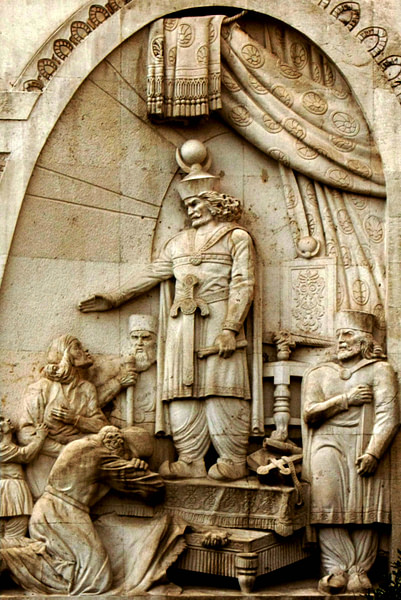
Kosrau I (r. 531-579) is commonly regarded as the greatest of the Sassanian kings. He further reformed the military, government, religious traditions, expanded his territories, developed the arts and sciences, and engaged in large-scale building projects. The work on committing the Avesta to writing was completed and the commentary on it expanded under his reign. He was known to the Greeks as epitomizing Plato's vision of the Philosopher King, ruling justly and wisely, and inviting scholars, philosophers, and religious leaders of different faiths to his court. By the end of his reign, he had brought the empire to a height it would never see again.
Monarchs from Hormizd IV to Yazdegerd III (579-651)
Hormizd IV (r. 579-590), son of Kosrau I, continued his father's policies and, initially, had a successful reign but was challenged by a popular general, Bahram Chobin (d. c. 591) who was backed by a contingent of powerful nobles. He was deposed by the nobles and assassinated by his son who took the throne name Kosrau II.
Kosrau II (r. 590-628) was also challenged by Chobin, fled to Constantinople, and was backed by the Byzantine emperor Maurice (r. 582-602) who helped him regain his throne and get rid of Chobin in return for large concessions in Sassanian territory and strategic forts. Kosrau II kept peace with the Byzantines as long as Maurice was emperor but, after his assassination in 602, Kosrau II declared war on his successor. These wars initially went in Kosrau's favor but he was eventually defeated under the emperor Heraclius (r. 610-641) in 628. These wars exhausted the Sassanian Empire, depriving them of well-trained generals and soldiers as well as depleting the treasury. Kosrau II's reign, in fact, is the beginning of the end of the empire. He was deposed and imprisoned by his stepson Sheroe (also given as Shiroe) who took the throne name Kavad II.
Kavad II (r. 628) began his reign by murdering his brothers, stepbrothers, and half-brothers, effectively destroying the future of the royal House of Sassan, before killing his father in prison. He ruled only a few months before dying of the plague which was named after him: Sheroe's Plague.
Ardashir III (r. 628-629) was the seven-year-old son of Kavad II whose reign was administered by the vizier Mah-Adur Gushnasp (also given as Mehr Hazez) who is said to have ruled wisely. The young prince and the vizier were both killed in a coup which elevated the general Shahrbaraz (d. 630) briefly to power.
Boran (also known as Purandokht, r. 629-631) was the daughter of Kosrau II and the first female monarch of the Sassanian Empire. She was elevated by one faction of the nobility prior to Shahrbaraz's coup and ruled after he was assassinated. She was deposed briefly in favor of her sister Azarmidokht (r. 630) who killed a powerful noble and was, in turn, deposed and killed by his son who returned the throne to Boran. She initiated peaceful relations with the Byzantines and attempted to stabilize the empire but the infighting of the nobles and the devastation of the economy and social structure due to Kosrau II's wars made any significant advances impossible. She was assassinated by a rival political faction, plunging the empire into a civil war which was only resolved by the two sides agreeing on crowning Kosrau II's grandson Yazdegerd III as king.
Yazdegerd III (r. 632-651) was the last monarch of the Sassanian Empire who spent most of his reign in flight from the invading Muslim Arabs. He was eight years old when he came to power and the government was essentially run by the general Rostam Farrokhzad (d. 636) and the nobles. The empire had been weakened by Sheroe's Plague of 627-628 and Muslim Arab incursions began in earnest in 633. In 636, at the Battle of al-Qadisiyya, the Sassanian army under Rostam was defeated and he was killed. Yazdegerd III mounted a number of other defenses – notably in 637 at Jalula and in 642 at Nihavand – but he did not have the resources or skilled military talent of the empire before Kosrau II's wars. He was eventually assassinated in 651 and the Sassanian Empire fell to the Arabs.
Conclusion
What remained of the royal family fled over the Pamir Mountains into China where they were granted asylum by the Chinese emperor Gaozong of the Tang Dynasty (r. 649-683), as were future refugees, creating a Persian community in the city of Zaranj. Yazdegerd III's son, Peroz III (l. 636 - c. 679) asked for and was given military aid by the Tang to fight the Arabs, and his brothers Narseh II and Bahram VII did the same – as well as Yazdegerd III's grandson Kosrau VI – but the Sassanian Empire was finished and the princes in exile did not have the kinds of resources to mount a serious challenge to the Arab invaders.
In completing their conquest, the Muslim Arabs suppressed the Persian culture, turned the fire temples into mosques, banned Zoroastrianism, burned the texts and libraries, looted the palaces and universities, and forced the conversion of the populace that had not managed to escape. In time, Persian culture would come to inform the Islamic Caliphates and, in fact, many of the advances in science, literature, art and architecture, and mathematics – regularly attributed to Muslim scholars – were actually developed or suggested earlier by the Persians. The legacy of the Sassanian Empire, in fact, continued to inform numerous aspects of Muslim Arab culture, eventually expanding east and west to influence others around the world.
